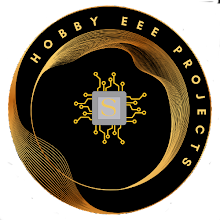The transistor was invented in 1947 by three scientists at Bell Laboratories in the United States. Although the first transistor was not a bipolar junction device, it began a technological revolution that continued into the 21st century. All complex electronic devices and systems developed or used today are an outgrowth of the early development of the semiconductor transistor.
Transistors are electronic parts. this component is used to amplify or modify electrical signals or power in circuits. It is made of semiconductor material. two sorts of transistors of n-type or p-type. It works relying upon the electric flow. Transistors have three terminals: emitter, collector, and base (or source, drain, and gate). By applying a little voltage or current to the base (or gate), the transistor has some control over the progression of current between the emitter(or source) and collector (or drain).
There are two basic types of transistors:
- Bipolar Junction Transistor (BJT)
- Field-effect transistor (FET)
The bipolar junction transistor is used in two broad areas of electronics:
- As a linear amplifier for amplifying electrical signals
- In electronic switches
Transistors are of two types based on the junction:
- NPN Transistor
- PNP Transistor
NPN Transistor
The emitter, base, and collector transistor terminals are E, B, and C. The two junctions of a transistor are the emitter-base (E/B) junction and the collector-base (C/B) junction.
NPN transistors are made of silicon or germanium semiconductor materials. When a p-type semiconductor element is made up of two n-type semiconductor elements, it is called an NPN transistor. Shows an NPN transistor consisting of a layer of p-type material sandwiched between two layers of n-type material. NPN transistor has three terminals: emitter, base, and collector.
PNP Transistor
The emitter, base, and collector transistor terminals are E, B, and C. The two junctions of a transistor are the emitter-base (E/B) junction and the collector-base (C/B) junction.
PNP transistors are made of silicon or germanium semiconductor materials. When an n-type semiconductor element is made up of two p-type semiconductor elements, it is called a PNP transistor. Shows a layer of n-type material sandwiched between two layers of p-type material. It is called a PNP transistor. PNP transistor has three terminals: emitter, base, and collector.
$ads={1}
BC557 Transistor(PNP)
The BC557 is a PNP transistor. When the base pin is grounded, the collector and emitter pins are closed (forward-biased). When a positive voltage is applied to the base pin, the collector and emitter pins are open (reverse biased).
It is a bi-polar NPN transistor. This component has a maximum collector current (IC) of 100mA, an emitter-base voltage (VBE) of 6V, a base current (IB) of a maximum of 5mA, and a maximum DC gain (hFE) of 800.
Read Also:
$ads={2}
Frequently Asked Questions:
What are the basic types of transistors?
There are two basic types of transistors: 1.Bipolar Junction Transistor (BJT) 2.Field-effect transistor (FET)
The bipolar junction transistors are mainly used in electronics for what purpose?
The bipolar junction transistor is used in two broad areas of electronics: 1. As a linear amplifier for amplifying electrical signals and 2. In electronic switches
What is the maximum Collector-emitter voltage of Transistor 2n3906?
Transistor 2n3906 maximum Collector-emitter voltage is 40 Voltage.
What is the maximum watt of Transistor 2n3906?
Transistor 2n3906 maximum watt is 625mWatt.
What is the maximum Collector current(Ic) of Transistor 2n3906?
Transistor 2n3906 maximum Collector current(Ic) is 200mAmp









Post a Comment